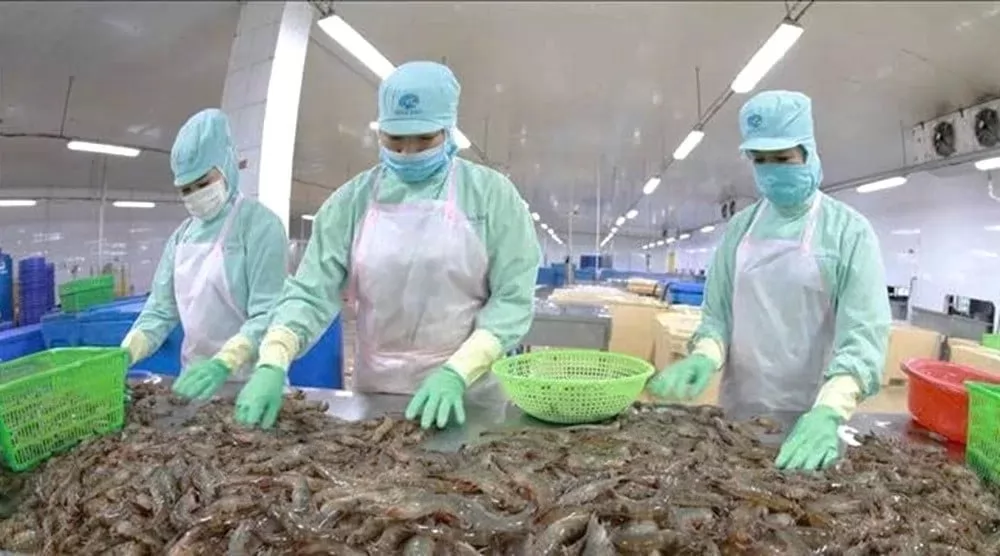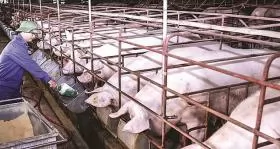Prevalence of Salmonella in UK eggs remains well controlled

Overall, the prevalence of Salmonella in laying hens in Great Britain remains considerably lower than in 2004 and 2005 when the EU baseline survey was carried out. Photo: Canva.
(VAN) Long-term progress in the battle against Salmonella in laying hens has been confirmed in the latest annual publication by the UK government.
The Animal and Plant Health Agency report on Salmonella in animals and feed in Great Britain provides a retrospective account of the situation in 2024, offering valuable insight into how the poultry sector continues to manage this enduring challenge.
The National Control Programme (NCP) sets a target for a maximum of 2% of laying hen flocks testing positive for regulated Salmonella serovars annually and applies to all UK commercial flocks with 350 or more birds. The overall prevalence in GB flocks was 0.89% last year, despite an increase on 2023 figures.
In 2024, 33 laying hen flocks tested positive for Salmonella – an increase of 13.8% from the 29 flocks reported in 2023, but still more than halved compared with the baseline year of 2008, when the NCP was first implemented.
Importantly, only 0.24% of flocks tested positive for regulated serovars (serovars of human health concern), a figure well below the statutory 2% ceiling.
S. Enteritidis and S. Typhimurium
The data reveals how the balance of regulated serovars has shifted. S. Enteritidis, once the most pressing concern, was identified in only 2 flocks in 2024, down from 3 the year before and a dramatic reduction from the peak of 14 in 2019.
This decline reflects the success of vaccination campaigns and targeted interventions. In contrast, S. Typhimurium showed an increased to 7 flocks compared with just 2 in 2023. While still within control limits and still at low levels, this rise highlights the pathogen’s adaptability and the need for renewed focus on management strategies. Meanwhile, no cases of monophasic S. Typhimurium were recorded in 2024, offering some reassurance.
For producers, the growth of S. Typhimurium is a signal that complacency is not an option; this serovar is known for its persistence in environmental reservoirs and its ability to bypass traditional controls.
Regional variations found that Scotland reported no positives, while England stood at 0.26% and Wales at 0.46%. Though the numbers remain low, such differences underline the importance of locally attuned surveillance and biosecurity measures.
Concerns regarding antimicrobial resistance
The report also points to wider concerns about antimicrobial resistance, reminding the sector that even low levels of Salmonella carry long-term risks if resistant strains become more widespread. Continued vigilance, prudent antibiotic stewardship, and the refinement of pest control and vaccination strategies will be critical to staying ahead.
A major achievement
Taken as a whole, the 2024 results illustrate both the success and the fragility of Salmonella control. The British Free Range Egg Producers Association (Bfrepa) said the dramatic reduction since 2008 is a major achievement, reflecting the commitment of pullet rearers, producers, regulators and vets alike.
While fluctuations in individual serovars are inevitable, the overall trend remains encouraging. For consumers, the message is clear, Bfrepa said: “British eggs and poultry products remain among the safest in Europe. For the industry, the results reinforce the value of sustained investment in biosecurity and demonstrate how collective action delivers long-term gains.”
Regulated serovars
Of the 9 flocks tested positive for regulated serovars – slightly up from 7 in 2023, but well below the 2019 peak of 16 – the types were:
S. Enteritidis: 2 flocks (down from 3 in 2023; down from 14 in 2019)
S. Typhimurium: 7 flocks (up from 2 in 2023)
Monophasic S. Typhimurium: 0 flocks (down from 1 in 2023)
In terms of the prevalence of regulated serovars, all remain well below the 2% target:
GB overall: 0.24% (9 of 3,700 flocks)
England: 0.26%
Wales: 0.46%
Scotland: 0.00%
As well as regulated strains, the report also monitored a range of non-regulated serovars, providing a fuller picture of Salmonella across the national flock.
Non-regulated serovars
14 different non-regulated serovars found in 24 flocks (down from 17 in 2023)
The most common were:* Salmonella 61:k:1,5,(7) (6 flocks) – typically sheep-adapted* S. Newport (4 flocks) – consistently detected annually
New detections in 2024: S. Chester, S. Corvallis, S. Havana
To complement this picture, the report also examined pullets in rear, providing reassurance about the pipeline of birds entering the laying population.
Pullets in rear flocks
No in rear flocks tested positive in 2024 – a continued downward trend. The last regulated serovar detection in immature flocks was in 2018.
Overall prevalence of Salmonella in flocks
Overall, a 0.89% prevalence of Salmonella was found, which was down from 1.13% in 2022. Great British producers and pullet rearers can be proud of their achievement and it is important to recognise the continued success in controlling Salmonella since the NCP was introduced in 2008.
The 2024 report concludes: “Overall, the prevalence of Salmonella in laying hens in Great Britain remains considerably lower than in 2004 and 2005 when the EU baseline survey was carried out,” adding that this “demonstrates continued successful control of Salmonella in the egg industry”.
H.D
(Poultryworld)
Maybe you are interested

3 growth scenarios for agricultural, forestry, and fishery exports amid new U.S. tariffs
The Institute of Policy and Strategy for Agriculture and Environment has recently forecast three scenarios regarding the impact of U.S. tariffs on agricultural, forestry, and fishery exports.

Farmers face losses as hog prices continue to drop
Pig farmers in southern of Việt Nam are potentially facing huge losses before Tết (Lunar New Year) as pork prices have plummeted by 15- 20 per cent in the last two months.

HCM City crocodile farming in a deep slump
HCM CITY - Crocodile farmers in HCM City are facing heavy losses since the COVID-19 pandemic is affecting export.





